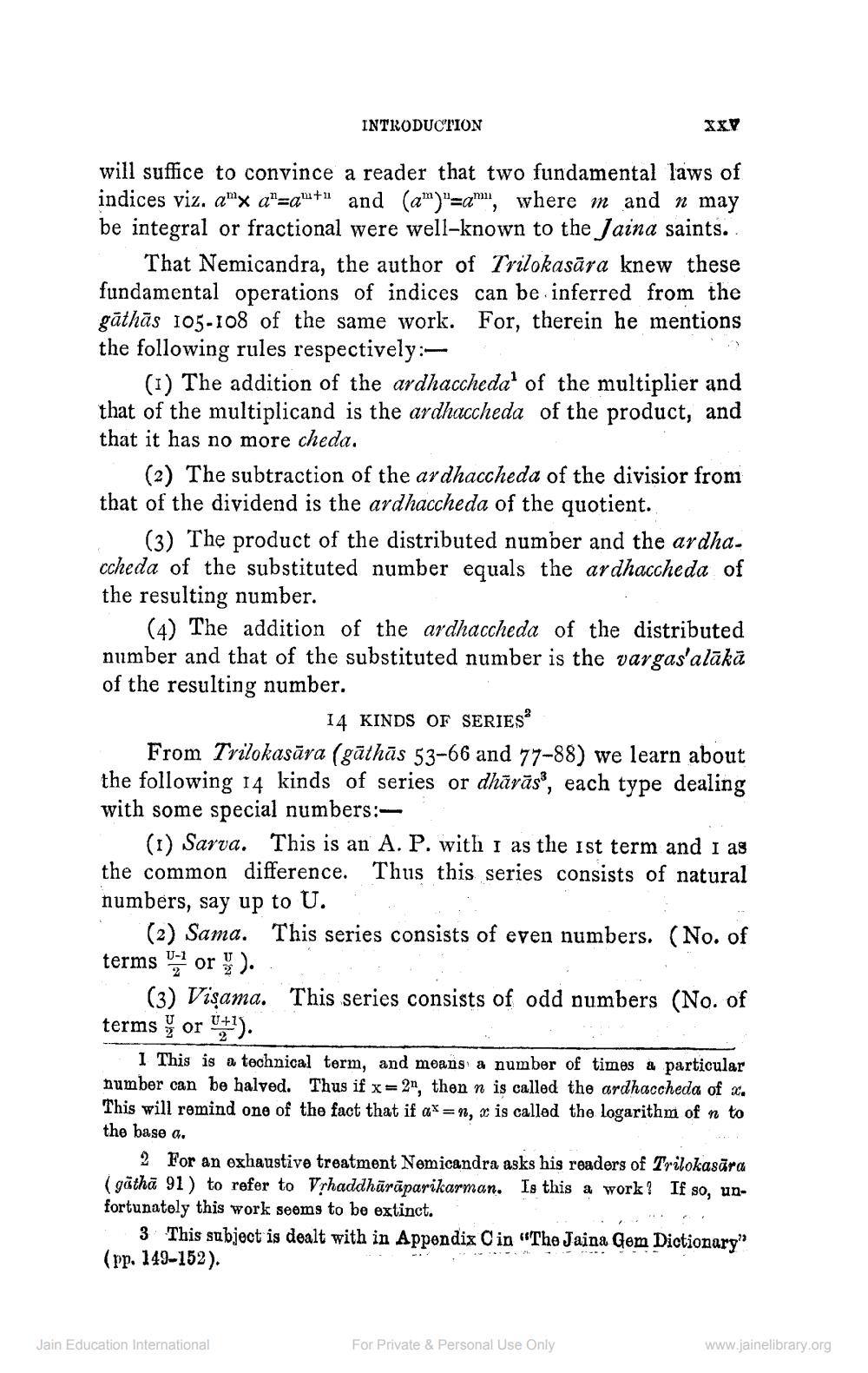________________
INTRODUCTION
will suffice to convince a reader that two fundamental laws of indices viz. a"x a“=au+i1 and (am)"=am, where m and n may be integral or fractional were well-known to the Jaina saints.
That Nemicandra, the author of Trilokasāra knew these fundamental operations of indices can be inferred from the gāthās 105-108 of the same work. For, therein he mentions the following rules respectively:
(1) The addition of the ardhacchedal of the multiplier and that of the multiplicand is the ardhaccheda of the product, and that it has no more cheda.
(2) The subtraction of the ardhaccheda of the divisior from that of the dividend is the ardhaccheda of the quotient.
(3) The product of the distributed number and the ardhaccheda of the substituted number equals the ardhaccheda of the resulting number.
(4) The addition of the ardhaccheda of the distributed number and that of the substituted number is the vargas'alākā of the resulting number.
14 KINDS OF SERIES From Trilokasāra (gāthās 53-66 and 77-88) we learn about the following 14 kinds of series or dhārās®, each type dealing with some special numbers:
(1) Sarva. This is an A. P. with I as the ist term and i as the common difference. Thus this series consists of natural numbers, say up to U.
(2) Sama. This series consists of even numbers. (No. of terms or ).
(3) Vişama. This series consists of odd numbers (No. of terms or 0+2).
1 This is a technical term, and means a number of times a particular number can be halved. Thus if x= 2n, then n is called the ardhaccheda of x. This will remind one of the fact that if a* = , x is called the logarithm of n to the base a.
2 For an exhaustive treatment Nemicandra asks his readers of Trilokasära (gätha 91 ) to refer to Vrhaddhārāparikarman. Is this a work? If so, unfortunately this work seems to be extinct.
3 This subject is dealt with in Appendix Cin "The Jaina Gom Dictionary (pp. 149–152).
Jain Education International
For Private & Personal Use Only
www.jainelibrary.org




